
|
| |
|
|
|
|
 |
|
|
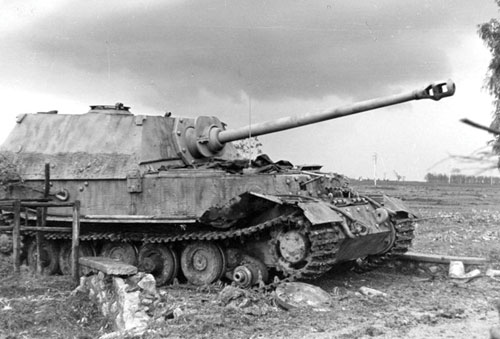 |
653. Schwere Panzerjägerabteilung
By Dr. Michael L. McSwiney, Ph.D.
April – August 1944
In December 1943, the Soviets began operations that would ultimately drive a wedge between Army Groups South and Centre. By late March 1944, Soviet forces had surrounded the important road junction of Tarnopol with the goal of securing the junction and the rail line from Odessa to Lemberg, which was vital to the German war effort. During this time, the 653. Schwere Panzerjägerabteilung was undergoing refit with the overhauled Ferdinands (soon to be renamed “Elefant”).
|
|
The first company was re-equipped and sent into service in Italy (along with the 1st Maintenance Platoon). This left the Stab (headquarters) company and
the 2nd and 3rd companies to await completion of their overhaul and
assignment. This effort was completed in on 31 March 1944 and the three
companies embarked for the eastern front on 2 April arriving in
Brzezany on 6 April. By 8 April, 653. Schwere Panzerjägerabteilung was
attached to the 9. SS-Panzerdivision in an effort to relieve Tarnopol.
This effort ultimately failed, and the operation was called off. At the
end of April the abteilung began a reasonably quiet time of rebuilding
and retraining of replacements in Brzezany.
|
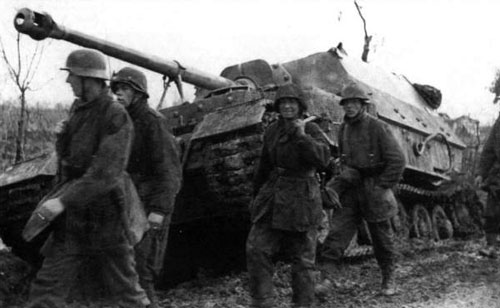 |
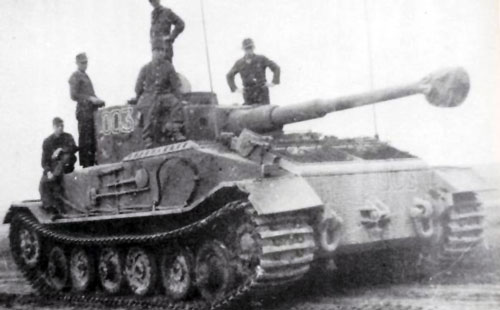 |
It was during the time in Brzezany that the 653.
Schwere Panzerjägerabteilung received and converted the various
“special vehicles” that make the unit distinct (apart from the fact
that it was one of the only two battalions to receive the
Ferdinand/Elefant tank-hunter). Among the special vehicles was a Tiger
(P) VK 4501 which had been upgraded with radios and zimmerit to create
a command vehicle. |
|
They also converted a Bergepanther adding a
stationary Panzer IV turret, a Bergepanther with a quad 2cm
anti-aircraft gun, a T-34 with a quad 2cm anti-aircraft gun, and two
T-34 ammunition carriers. The anti-aircraft turrets were built by the
battalion’s maintenance unit from half-track armoured plate. The
battalion also received four further Elefant tank destroyers with a
modified rear hatch which modified the rear hatch to better facilitate
the installation and removal of the main armament.
On 13 July 1944, the 1st and 4th Ukrainian
Fronts attacked Army Group North Ukraine quickly splitting the 1st and
4th German Panzer Armies.
|
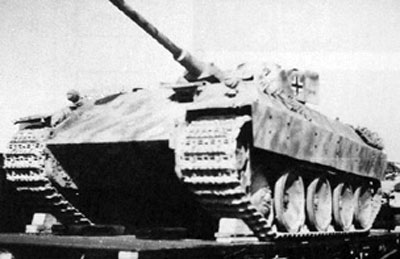 |
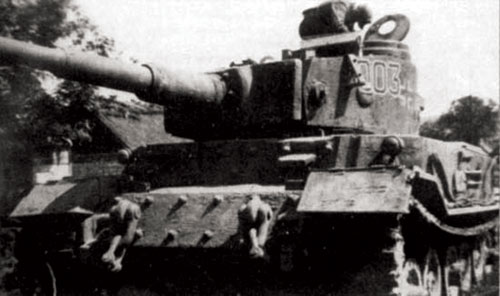 |
The 653. Schwere Panzerjägerabteilung came
under assault from several Soviet divisions at Pomeryany and Rohatyn on
14 August 1944. The battalion fought an incessant rearguard action
through Lemberg, Kurowice, and Yeziezanka. Unfortunately during this
fighting withdrawal, the battalion lost over 60% of its heavy vehicles.
Most were not lost to direct enemy action, but rather to the inherent
weaknesses of the Elefant design. Its technical complexity resulted in
several break downs and other technical failures. The speed of the
advance meant that any breakdown often resulted in the vehicle being
left behind.
|
|
Many bridges could not support the weight of the immense
tank destroyer, and the fuel situation also meant many simply ran out
of gasoline and had to be destroyed by their crews.
The Elefants, September to the end
The few remaining Elefant tank-hunters of 653. Schwere
Panzerjägerabteilung initially remained with the 17th Army.
|
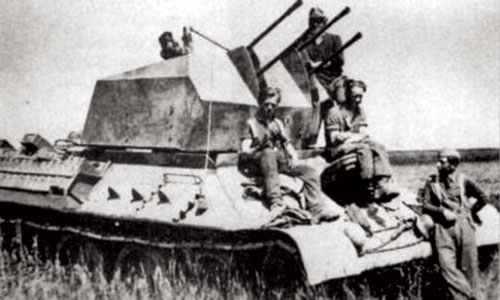 |
|
The
Elefants were concentrated into the 2nd company, which was later
renamed the 614. Schwere Panzerjägerkompanie. The company later joined
the XXXXVIII Panzerkorps under 4th Army command on the eastern front.
The rest of the 653. Schwere Panzerjägerabteilung returned to Germany
where they were refitted with the new Jagdtiger tank-hunters.
The Elefants continued to serve on the eastern front. They fought against the Soviet Vistula-Oder Offensive in January 1945.
|
Last Updated On Monday, March 19, 2012 by Wayne at Battlefront
|
|
|